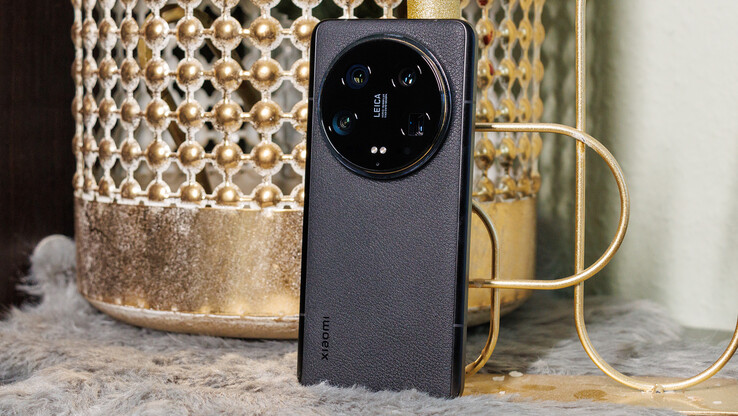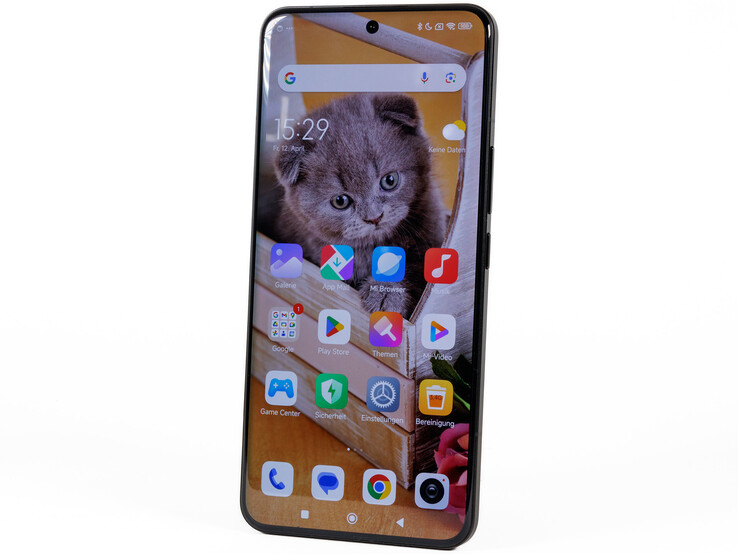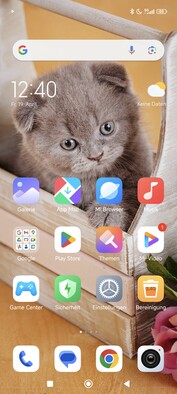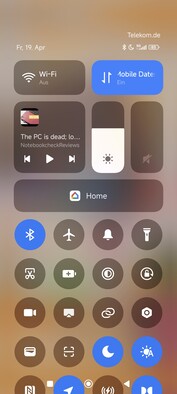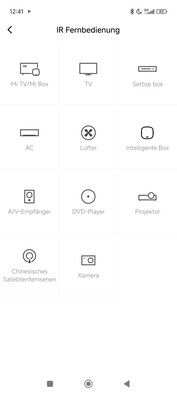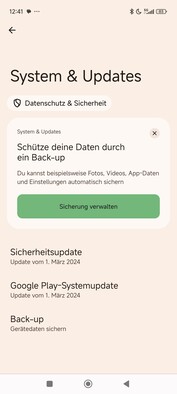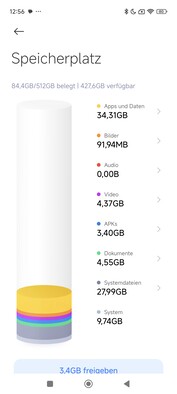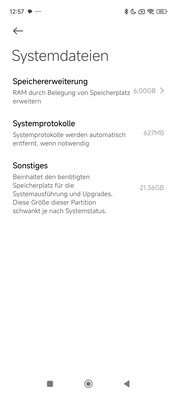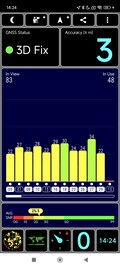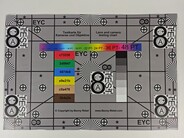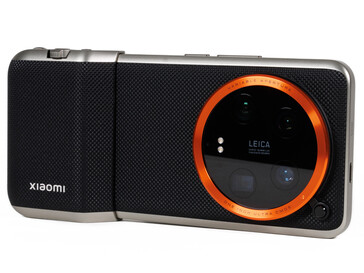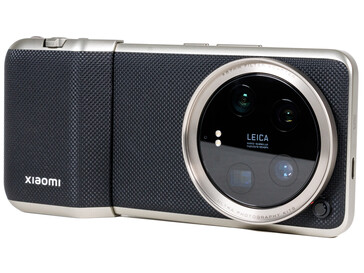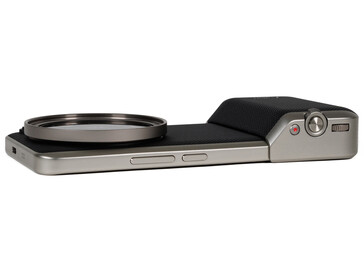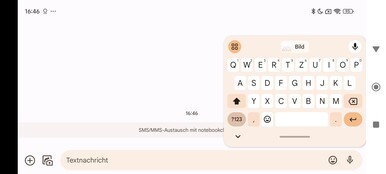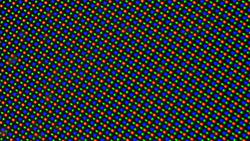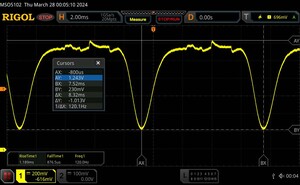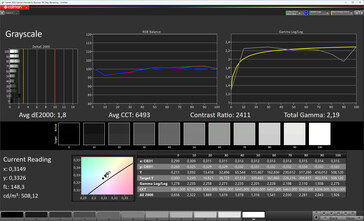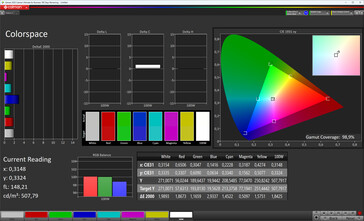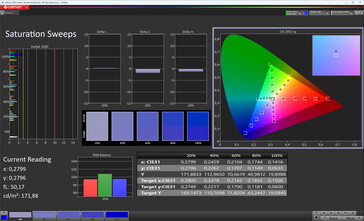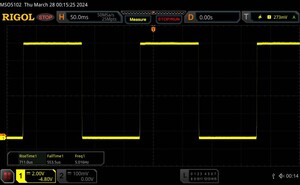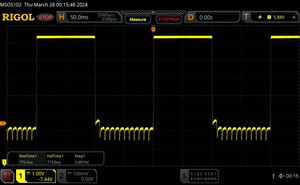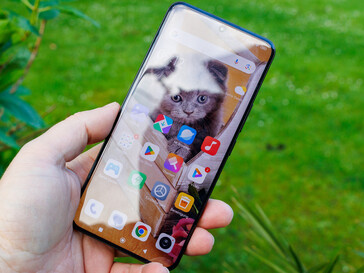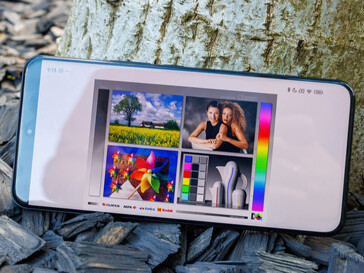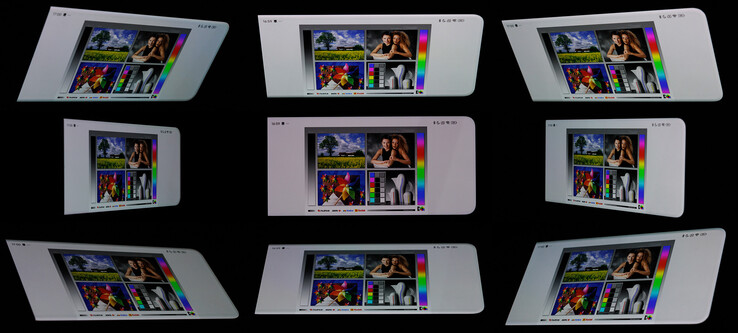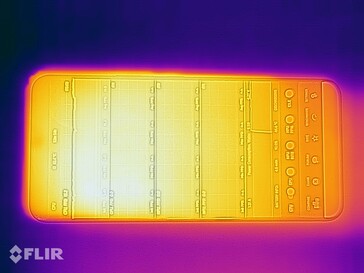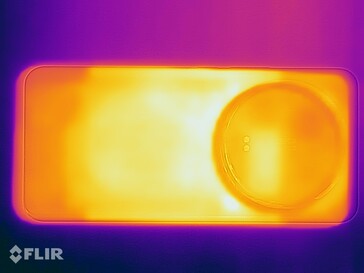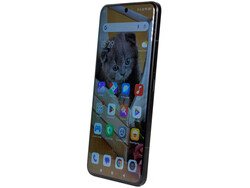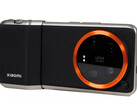Xiaomi 14 Ultra review - The Leica phone comes up trumps
The Xiaomi 14 Ultra is the successor to the 13 Ultra. In comparison to its predecessor, the new model has seemingly only received minor updates, but it is now available to purchase more widely.
Its AMOLED display now supposedly gets even brighter, its Snapdragon 8 Gen 3 is—as expected—the fastest SoC made by Qualcomm and Xiaomi is the second manufacturer (after Honor) to rely on silicone-carbon technology for the phone's battery. The real highlight, however, is its quad camera on the back which was developed in collaboration with the renowned German company Leica. Its main lens has access to a new sensor and the tele lenses are now all macro-capable.
Xiaomi advertizes a price of around US$1,600 for the phone. In this review, you can find out whether it is worth the money or not.
Possible competitors compared
Rating | Date | Model | Weight | Drive | Size | Resolution | Price |
|---|---|---|---|---|---|---|---|
| 89.2 % v7 (old) | 04 / 2024 | Xiaomi 14 Ultra SD 8 Gen 3, Adreno 750 | 219.8 g | 512 GB UFS 4.0 Flash | 6.73" | 3200x1440 | |
| 91.1 % v7 (old) | 12 / 2023 | Apple iPhone 15 Pro Max A17 Pro, A17 Pro GPU | 221 g | 256 GB NVMe | 6.70" | 2796x1290 | |
| 89 % v7 (old) | 12 / 2023 | Google Pixel 8 Pro Tensor G3, Mali-G715 MP7 | 213 g | 128 GB UFS 3.1 Flash | 6.70" | 2992x1344 | |
| 90.6 % v7 (old) | 05 / 2024 | Honor Magic6 Pro SD 8 Gen 3, Adreno 750 | 229 g | 512 GB UFS 4.0 Flash | 6.80" | 2800x1280 | |
| 91.1 % v7 (old) | 05 / 2024 | Samsung Galaxy S24 Ultra SD 8 Gen 3 for Galaxy, Adreno 750 | 232 g | 256 GB UFS 4.0 Flash | 6.80" | 3120x1440 | |
| 88.5 % v7 (old) | 03 / 2024 | Vivo X100 Pro Dimensity 9300, Immortalis-G720 MP12 | 221 g | 512 GB UFS 4.0 Flash | 6.78" | 2800x1260 |
Case - Shield glass protects the Xiaomi 14 Ultra
On its website, Xiaomi speaks of a slimmer case when describing the Ultra. In fact, according to its specs, its build height has actually risen from 9.06 millimetres (Xiaomi 13 Ultra) to 9.2 millimetres. This may not be much, but it is certainly not slimmer. We even measured 9.35 millimetres and with the cameras, it has a thickness of up to 15.9 millimetres. It should be noted that the 14 Ultra is no longer top-heavy.
The Xiaomi 14 Ultra comes in the colors black and white. Both versions feature a matte aluminum frame that doesn't attract fingerprint marks. The back is made from faux leather and is supposedly more resistant than its predecessor (six times more so, to be precise). The display glass is rounded on all sides and is made of Xiaomi's own Shield glass. This is said to be ten times more impact-resistant than the Gorilla Glass Victus within the 13 Ultra, and the phone also comes with a screen protector preinstalled.
Its materials make a high-quality impression and its build quality is really good. We noted no gaps and everything lines up perfectly. The Xiaomi 14 Ultra can withstand twisting attempts without making a sound. The optical image stabilizers only rattle unusually loudly when the phone is shaken. According to Xiaomi, however, this is normal.
The smartphone is IP68-certified; in other words, it is dust and waterproof.
Connectivity - Super-fast USB port on the Xiaomi phone
The Xiaomi 14 Ultra continues to feature an infrared sensor which you can use to control multimedia devices, air cons and co. Adding to this is Bluetooth 5.4, NFC and fast USB 3.2 (Gen 2).
The phone's USB port is not only fast on paper—it achieved 1,145.87 MB/s during our copying test, meaning it almost uses the standard to its full potential. It also supports USB-OTG, so peripheral devices and external storage media can be connected to the smartphone. The latter can be formatted with FAT, FAT32, exFAT or NTFS. Wired image output is also possible, but the smartphone's screen is simply mirrored.
What the Xiaomi 14 Ultra still lacks is UWB. There is also no storage expansion option via microSD and it doesn't feature a dedicated audio jack.
Software - HyperOS with five years of updates
The Xiaomi 14 Ultra comes with HyperOS 1.0 which is based on Android 14. Of course, it supports Google services and visually, the operating system barely looks any different to MIUI. One advantage is its better cross-device connection and slimmer system, which is 9.74 GB in size on this model. However, if you include the additional system files, its size adds up to a comparatively generous 37.73 GB.
Xiaomi is set to give its flagship smartphone four major updates as well as security patches for five years. At the time of testing, the latest patch was from March 2024, so very up-to-date.
Communication and GNSS - Wi-Fi 7 and precise location services
The Xiaomi 14 Ultra supports a wide range of mobile frequencies, but there are still a few gaps when it comes to global use. Thankfully, this shouldn't result in any connection issues. In larger cities, its connection is good.
The Xiaomi smartphone supports tri-band WLAN and Wi-Fi 7, so all the modern standards. Together with our reference router (Asus ROG Rapture GT-AXE11000 (Wi-Fi 6E)), we noted high and mostly stable transfer rates. However, it seems that it is faster at sending data than receiving it.
We tested its Wi-Fi 7 functionality using a TP-Link Archer BE800. The modern network was recognized with all three bands without any issues. While the 5 GHz network benefits from the modern standard and results in good data rates (sending: 1,515 MBit/s / receiving: 1,510 MBit/s (average values)), the Xiaomi 14 Ultra clearly falls short of expectations within the 6 GHz network. It only manages 693 MBit/s (sending) and 834 MBit/s (receiving). By comparison, the Vivo X100 Pro can manage up to 3.7 Gbit/s in the same scenario (peak value when sending). Xiaomi still has room for improvement in this aspect.
| Networking | |
| Xiaomi 14 Ultra | |
| iperf3 receive AXE11000 | |
| iperf3 transmit AXE11000 | |
| iperf3 transmit AXE11000 6GHz | |
| iperf3 receive AXE11000 6GHz | |
| Apple iPhone 15 Pro Max | |
| iperf3 receive AXE11000 | |
| iperf3 transmit AXE11000 | |
| iperf3 transmit AXE11000 6GHz | |
| iperf3 receive AXE11000 6GHz | |
| Google Pixel 8 Pro | |
| iperf3 receive AXE11000 | |
| iperf3 transmit AXE11000 | |
| iperf3 transmit AXE11000 6GHz | |
| iperf3 receive AXE11000 6GHz | |
| Honor Magic6 Pro | |
| iperf3 receive AXE11000 | |
| iperf3 transmit AXE11000 | |
| Samsung Galaxy S24 Ultra | |
| iperf3 receive AXE11000 | |
| iperf3 transmit AXE11000 | |
| iperf3 transmit AXE11000 6GHz | |
| iperf3 receive AXE11000 6GHz | |
| Vivo X100 Pro | |
| iperf3 receive AXE11000 | |
| iperf3 transmit AXE11000 | |
| iperf3 transmit AXE11000 6GHz | |
| iperf3 receive AXE11000 6GHz | |
| Xiaomi 13 Ultra | |
| iperf3 receive AXE11000 | |
| iperf3 transmit AXE11000 | |
| iperf3 transmit AXE11000 6GHz | |
| iperf3 receive AXE11000 6GHz | |
| Average of class Smartphone | |
| iperf3 receive AXE11000 | |
| iperf3 transmit AXE11000 | |
| iperf3 transmit AXE11000 6GHz | |
| iperf3 receive AXE11000 6GHz | |
The Xiaomi 14 Ultra uses all satellite navigation services for locating purposes—apart from the Japanese QZSS. It uses the most common bands and even manages to locate quickly and precisely indoors.
We took the Ultra with us on a bike trip with the Garmin Venu 2 to compare. The smartphone had nothing to fear, as its recorded route was even more precise than that of the fitness smartwatch.
Telephone features and call quality - No eSIM support
The Xiaomi 14 Ultra masters telephone features such as WLAN calls and VoLTE—but not eSIMs. Instead, it offers conventional dual-SIM operation using two nano SIM cards. The phone uses Google's telephone app.
When held up to your ear, the Xiaomi device's call quality is excellent, boasting natural voice transmission in quiet surroundings. If there is a lot of ambient noise surrounding the user, then their voice may sound a little restricted and background noise can occasionally be heard. Its loudspeaker mode is also good, with good intelligibility even from a distance of two meters—but then it sounds slightly tinny and somewhat quieter.
Cameras - The Xiaomi 14 Ultra with a quad camera from Leica
Not much has changed about the Xiaomi 14 Ultra's front-facing camera. It continues to feature a resolution of 32 MPix and doesn't use pixel binning, which is why its photo file size is relatively large. It doesn't have an autofocus function. Even so, photos taken with this lens look pretty good, even on darker days. Videos can be recorded in Ultra HD and at up to 60fps at best. If you record in Dolby Vision, a maximum of 4k/30fps is possible.
The Xiaomi 14 Ultra's highlight is its quad camera on the back. Its main sensor is a 1-inch Sony LYT-900. Its pixel edge length is 1.6 µm, which is combined into a 3.2 µm superpixel via pixel binning. The images are therefore not 50 MPix in size, but 12.5 MPix. However, an optional 50 MPix mode is also available. In addition to optical image stabilization (OIS), the camera has an anti-reflective coating (ALD: Anti-Reflective Coating). It also allows you to adjust its aperture from f/1.63 to f/4.0. Details in the photos taken using this lens are great and the background sharpness is also consistent. At close range, however, the images become very dark and the contrasts are very pronounced. The 14 Ultra delivers good photos in low-light conditions, too—however, upon closer inspection, some detail is lost and a few blurry spots creep in at times.
The other lenses again rely on the Sony IMX858. As was already the case with its predecessor, its ultra-wide-angle lens can be used for taking macro shots (minimum distance: 5 cm). In daylight, the lens delivers good results which unfortunately lose some sharpness towards the edges.
The other two lenses are optical magnification lenses, both of which are equipped with OIS. One features a 3.2x zoom and the periscope lens offers a 5x zoom. Both can also be used as telephoto macro lenses and must be used at a minimum distance of 10 and 30 cm respectively. A digital zoom of up to 120x is possible. Its depiction quality is pretty good and up to a 10x magnification (240 mm), the results are usable. Anything above this results in far poorer quality. From a magnification of 20x onwards, a digital viewfinder is activated—but its calibration is not accurate. As a result, the image section displayed in the mini viewfinder was always slightly to the right in the larger live view. At long focal lengths, weaknesses in the image stabilization also become noticeable, as the image is then visibly and sometimes jerkily blurred.
The Xiaomi 14 Ultra can record videos in all current resolutions and while this can also be done in Dolby Vision, you are then limited to Ultra HD and a maximum of 30fps. In terms of quality, however, the smartphone is impressive and also offers the option of recording in LOG format via the Pro mode.
If you want to opt for an aspect ratio other than 16:9, you should bear in mind that only black bars are added at the top and bottom in the so-called widescreen format. Even 21:9 is only displayed as a section, as the resolution of the videos in Full HD is then only 1,920 x 800 pixels, for example.
| Mode | Aspect ratio | Resolution |
|---|---|---|
| Photo | Full, 1:1, 16:9, 4:3, 21:9 | 12.5 MPix |
| 50 MP | 4:3 | 50 MPix |
| Pro (photo) | Full, 1:1, 16:9, 4:3 | 12.5 / 50 MPix |
| Video | wide-screen, 16:9 | HD (30 FPS), Full HD (30/60 FPS), Ultra HD (24/30/60/120 FPS), 8k (24/30 FPS) |
| Film | wide-screen, 16:9, 2.39:1 | Full HD (24 FPS) |
| Pro (video) | 16:9, wide-screen | HD (30 FPS), Full HD (30/60 FPS), Ultra HD (24/30/60/120 FPS), 8k (24/30 FPS) |
| Slow-motion | 16:9 | HD (120/240/480/960/1920 FPS)Full HD (120/240/480/960/1920 FPS) |
Image comparison
Choose a scene and navigate within the first image. One click changes the position on touchscreens. One click on the zoomed-in image opens the original in a new window. The first image shows the scaled photograph of the test device.
Main cameraMain cameraUltra-wide angle5x zoomLow lightUnder controlled lighting conditions, the Xiaomi 14 Ultra boasted really good depiction quality. Our test chart was captured with lots of detail and great sharpness, without it being too overly sharpened after snapping the picture. A slight (but not bothersome) loss of sharpness is only noticeable along the edges.
Color depiction can be influenced by the user. You have two modes to choose from, namely Leica Vibrant and Leica Authentic. The former results in colors being depicted more vividly, but this led to considerably higher DeltaE deviations when depicting the ColorChecker chart.
The Leica cooperation also extends to the cameras' visual design and includes several photography filters.
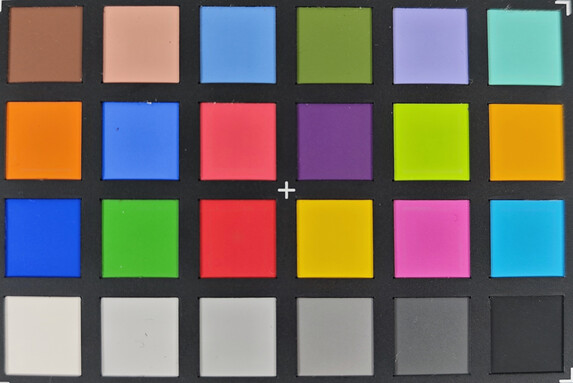
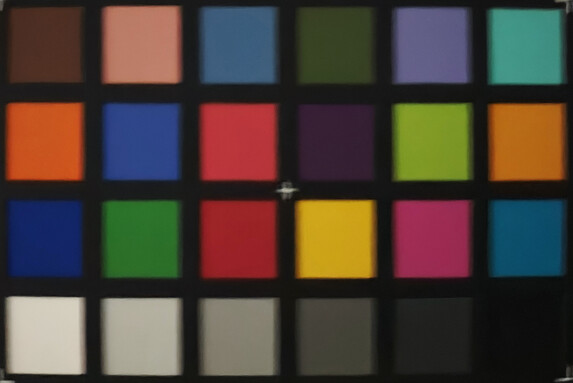
Accessories and warranty - Including a 90-watt power supply
The Xiaomi 14 Ultra comes delivered with a modular 90-watt power supply, a USB cable (Type-A to Type-C), a SIM tool as well as a protective case. The latter is made from simple black plastic and feels a little cheap.
You can optionally purchase a so-called Photography Kit. This kit consists of a more high-quality protective case, a camera grip with a wrist strap, a filter adapter ring (67 mm) as well as two decorative rings. The grip features a two-stage shutter release, a zoom lever, a record button and a rotary dial. The buttons can be assigned different options via the phone's settings but by default, they control classic functions such as zoom, starting/stopping a video recording or adjusting the exposure. Furthermore, it is fitted with a 1,500 mAh battery which supplies the Xiaomi phone with additional power. Either one of the decorative rings or the filter adapter ring can be attached to the lens ring on the protective case. This kit transforms the Xiaomi 14 Ultra into more of a compact camera and on trips, this is sure to provide some added value—although it does make the phone quite a bit bulkier. At around US$200, it is also not exactly cheap.
Xiaomi gives its smartphone a standard 12-month warranty in the United States which cannot be extended or expanded.
Input devices & operation - An optical fingerprint sensor inside the Xiaomi 14 Ultra
The Xiaomi 14 Ultra's capacitive touchscreen features a touch sampling rate of 240 Hz and it executes inputs quickly and reliably. A linear vibration motor (x-axis) provides haptic feedback and it works quietly while still remaining powerful enough to be felt.
An optical fingerprint sensor installed into the phone's display takes care of biometric security and it boasts high recognition rates and decent unlock speeds. In good lighting conditions, it is a little faster to use facial recognition via the front-facing camera—but this is less secure. The fingerprint sensor can additionally be used to measure your pulse.
If required, you can activate a one-handed mode. Plus, the power button can be assigned additional functions via the phone's settings. In addition, the back features a touch-sensitive surface which reacts to double or triple taps that activate a previously determined function, such as opening the camera app. You do have to press quite firmly but it also works when the smartphone is inside its protective case.
Display - The Xiaomi 14 Ultra shines bright at over 3,000 cd/m²
The Xiaomi 14 Ultra's LTPO AMOLED display has a diagonal of 6.73 inches (17.09 cm), features a 1,440p resolution and a refresh rate of 1 to 120 Hz. Moreover, it supports all conventional HDR standards including Dolby Vision.
When depicting a completely white screen with the ambient light sensor activated, its brightness may be quite high—but for a high-end phone, it is comparatively low. When depicting even amounts of light and dark areas (APL18), the middle of the image reaches up to 1,400 cd/m² and when playing back an HDR video on YouTube, we even noted up to 3,274 cd/m².
The Xiaomi 14 Ultra is unfortunately not spared from OLED flickering. To counteract this, Xiaomi relies on high-frequency PWM dimming at up to 1,920 Hz. At minimum brightness, however, we measured a frequency of 120 Hz. Although this is quite low, the flat and even amplitude curve makes it less stressful on the eyes than the frequency would suggest. This is not due to temporal dithering, which we couldn't detect—but instead, the phone probably uses black frame insertion (BFI), which is used to reduce motion blur and as burn-in protection. In the measurement series with a fixed zoom level, the amplitude curve at minimum brightness looks quite flat, but this is due to the scaling; the enlarged version of the amplitude at minimum brightness can be seen in the info box.
All-in-all, the Xiaomi 14 Ultra's display proves to be relatively easy on the eyes, however, we cannot completely rule out any issues for sensitive users.
| |||||||||||||||||||||||||
Brightness Distribution: 96 %
Center on Battery: 997 cd/m²
Contrast: ∞:1 (Black: 0 cd/m²)
ΔE ColorChecker Calman: 1.6 | ∀{0.5-29.43 Ø4.79}
ΔE Greyscale Calman: 1.8 | ∀{0.09-98 Ø5}
98.9% sRGB (Calman 2D)
Gamma: 2.19
CCT: 6493 K
| Xiaomi 14 Ultra AMOLED, 3200x1440, 6.7" | Apple iPhone 15 Pro Max OLED, 2796x1290, 6.7" | Google Pixel 8 Pro OLED, 2992x1344, 6.7" | Honor Magic6 Pro OLED, 2800x1280, 6.8" | Samsung Galaxy S24 Ultra Dynamic AMOLED 2X, 3120x1440, 6.8" | Vivo X100 Pro AMOLED, 2800x1260, 6.8" | Xiaomi 13 Ultra AMOLED, 3200x1440, 6.7" | |
|---|---|---|---|---|---|---|---|
| Screen | 12% | 19% | 7% | -26% | 40% | 17% | |
| Brightness middle (cd/m²) | 997 | 1102 11% | 1510 51% | 1575 58% | 1317 32% | 1392 40% | 1357 36% |
| Brightness (cd/m²) | 1002 | 1102 10% | 1467 46% | 1508 50% | 1365 36% | 1360 36% | 1340 34% |
| Brightness Distribution (%) | 96 | 98 2% | 92 -4% | 89 -7% | 94 -2% | 84 -12% | 89 -7% |
| Black Level * (cd/m²) | |||||||
| Colorchecker dE 2000 * | 1.6 | 1.1 31% | 1.1 31% | 1.7 -6% | 3.4 -113% | 0.6 62% | 1.1 31% |
| Colorchecker dE 2000 max. * | 3.3 | 3.1 6% | 3.8 -15% | 3.9 -18% | 5 -52% | 1.3 61% | 2.7 18% |
| Greyscale dE 2000 * | 1.8 | 1.6 11% | 1.7 6% | 2.4 -33% | 2.8 -56% | 0.9 50% | 2 -11% |
| Gamma | 2.19 100% | 2.19 100% | 2.23 99% | 2.22 99% | 2 110% | 2.25 98% | 2.2 100% |
| CCT | 6493 100% | 6555 99% | 6670 97% | 6398 102% | 6458 101% | 6540 99% | 6366 102% |
* ... smaller is better
Screen Flickering / PWM (Pulse-Width Modulation)
| Screen flickering / PWM detected | 120 Hz | ||
The display backlight flickers at 120 Hz (worst case, e.g., utilizing PWM) . The frequency of 120 Hz is very low, so the flickering may cause eyestrain and headaches after extended use. In comparison: 53 % of all tested devices do not use PWM to dim the display. If PWM was detected, an average of 8152 (minimum: 5 - maximum: 343500) Hz was measured. | |||
Measurement series with fixed zoom level and different brightness settings
We really like the panel's color depiction. If you would like to achieve the most natural result, then you'll have to select the option color scheme within the display settings, then click advanced settings and finally, select the color space original. After this, gray tones won't show any visible deviations and we only noted a slightly elevated DeltaE when it came to blue tones—but this is complaining on the very highest of levels.
When using the phone's standard settings, the screen's depiction is cooler and it depicts colors more saturated.
Display Response Times
| ↔ Response Time Black to White | ||
|---|---|---|
| 1.26 ms ... rise ↗ and fall ↘ combined | ↗ 0.711 ms rise | |
| ↘ 0.5535 ms fall | ||
| The screen shows very fast response rates in our tests and should be very well suited for fast-paced gaming. In comparison, all tested devices range from 0.1 (minimum) to 240 (maximum) ms. » 6 % of all devices are better. This means that the measured response time is better than the average of all tested devices (20.3 ms). | ||
| ↔ Response Time 50% Grey to 80% Grey | ||
| 1.55 ms ... rise ↗ and fall ↘ combined | ↗ 0.776 ms rise | |
| ↘ 0.773 ms fall | ||
| The screen shows very fast response rates in our tests and should be very well suited for fast-paced gaming. In comparison, all tested devices range from 0.165 (minimum) to 636 (maximum) ms. » 6 % of all devices are better. This means that the measured response time is better than the average of all tested devices (31.7 ms). | ||
Performance - Qualcomm SoC brings lots of power
As expected, the Xiaomi 14 Ultra relies on the currently most powerful SoC from Qualcomm: the Snapdragon 8 Gen 3. It has access to an impressive 16 GB LPDDR5x RAM.
During the benchmarks, the chipset achieved the results we expected—it only did a little worse when it came to AI calculations and didn't come close to using the SoC to its full potential.
Its system speed is high. Although this wasn't enough for the phone to secure first place during the benchmarks, it still runs buttery smooth in everyday use.
| UL Procyon AI Inference for Android - Overall Score NNAPI | |
| Vivo X100 Pro | |
| Google Pixel 8 Pro | |
| Average of class Smartphone (3769 - 81594, n=139, last 2 years) | |
| Samsung Galaxy S24 Ultra | |
| Honor Magic6 Pro | |
| Average Qualcomm Snapdragon 8 Gen 3 (11487 - 18370, n=22) | |
| Xiaomi 13 Ultra | |
| Xiaomi 14 Ultra | |
The integrated Adreno 750 painted a similar picture in the graphics benchmarks. The performance it offers may be very high but it was often slightly worse than the competitors fitted with the same chipset—in particular when the more modern Vulkan API came into play.
GFXBench (DX / GLBenchmark) 2.7: T-Rex Onscreen | 1920x1080 T-Rex Offscreen
GFXBench 3.0: on screen Manhattan Onscreen OGL | 1920x1080 1080p Manhattan Offscreen
GFXBench 3.1: on screen Manhattan ES 3.1 Onscreen | 1920x1080 Manhattan ES 3.1 Offscreen
GFXBench: on screen Car Chase Onscreen | 1920x1080 Car Chase Offscreen | on screen Aztec Ruins High Tier Onscreen | 2560x1440 Aztec Ruins High Tier Offscreen | on screen Aztec Ruins Normal Tier Onscreen | 1920x1080 Aztec Ruins Normal Tier Offscreen | 3840x2160 4K Aztec Ruins High Tier Offscreen
| 3DMark / Wild Life Extreme Unlimited | |
| Vivo X100 Pro | |
| Honor Magic6 Pro | |
| Samsung Galaxy S24 Ultra | |
| Xiaomi 14 Ultra | |
| Apple iPhone 15 Pro Max | |
| Xiaomi 13 Ultra | |
| Google Pixel 8 Pro | |
| 3DMark / Wild Life Extreme | |
| Honor Magic6 Pro | |
| Samsung Galaxy S24 Ultra | |
| Xiaomi 14 Ultra | |
| Vivo X100 Pro | |
| Apple iPhone 15 Pro Max | |
| Xiaomi 13 Ultra | |
| Google Pixel 8 Pro | |
| 3DMark / Wild Life Unlimited Score | |
| Samsung Galaxy S24 Ultra | |
| Honor Magic6 Pro | |
| Vivo X100 Pro | |
| Xiaomi 14 Ultra | |
| Apple iPhone 15 Pro Max | |
| Xiaomi 13 Ultra | |
| Google Pixel 8 Pro | |
| 3DMark / Solar Bay Score | |
| Honor Magic6 Pro | |
| Vivo X100 Pro | |
| Xiaomi 14 Ultra | |
| Samsung Galaxy S24 Ultra | |
| Apple iPhone 15 Pro Max | |
| 3DMark / Solar Bay Unlimited Score | |
| Honor Magic6 Pro | |
| Samsung Galaxy S24 Ultra | |
| Xiaomi 14 Ultra | |
| Vivo X100 Pro | |
| Apple iPhone 15 Pro Max | |
| 3DMark / Sling Shot Extreme (ES 3.1) Unlimited Physics | |
| Vivo X100 Pro | |
| Samsung Galaxy S24 Ultra | |
| Honor Magic6 Pro | |
| Xiaomi 13 Ultra | |
| Google Pixel 8 Pro | |
| Xiaomi 14 Ultra | |
| 3DMark / Sling Shot Extreme (ES 3.1) Unlimited Graphics | |
| Samsung Galaxy S24 Ultra | |
| Xiaomi 14 Ultra | |
| Vivo X100 Pro | |
| Xiaomi 13 Ultra | |
| Honor Magic6 Pro | |
| Google Pixel 8 Pro | |
| 3DMark / Sling Shot Extreme (ES 3.1) Unlimited | |
| Samsung Galaxy S24 Ultra | |
| Vivo X100 Pro | |
| Honor Magic6 Pro | |
| Xiaomi 13 Ultra | |
| Xiaomi 14 Ultra | |
| Google Pixel 8 Pro | |
| GFXBench (DX / GLBenchmark) 2.7 / T-Rex Onscreen | |
| Xiaomi 13 Ultra | |
| Google Pixel 8 Pro | |
| Vivo X100 Pro | |
| Samsung Galaxy S24 Ultra | |
| Xiaomi 14 Ultra | |
| Honor Magic6 Pro | |
| Apple iPhone 15 Pro Max | |
| GFXBench (DX / GLBenchmark) 2.7 / T-Rex Offscreen | |
| Vivo X100 Pro | |
| Samsung Galaxy S24 Ultra | |
| Honor Magic6 Pro | |
| Xiaomi 14 Ultra | |
| Xiaomi 13 Ultra | |
| Apple iPhone 15 Pro Max | |
| Google Pixel 8 Pro | |
| GFXBench 3.0 / Manhattan Onscreen OGL | |
| Xiaomi 13 Ultra | |
| Google Pixel 8 Pro | |
| Vivo X100 Pro | |
| Samsung Galaxy S24 Ultra | |
| Xiaomi 14 Ultra | |
| Honor Magic6 Pro | |
| Apple iPhone 15 Pro Max | |
| GFXBench 3.0 / 1080p Manhattan Offscreen | |
| Samsung Galaxy S24 Ultra | |
| Xiaomi 14 Ultra | |
| Honor Magic6 Pro | |
| Xiaomi 13 Ultra | |
| Vivo X100 Pro | |
| Apple iPhone 15 Pro Max | |
| Google Pixel 8 Pro | |
| GFXBench 3.1 / Manhattan ES 3.1 Onscreen | |
| Vivo X100 Pro | |
| Honor Magic6 Pro | |
| Samsung Galaxy S24 Ultra | |
| Xiaomi 14 Ultra | |
| Google Pixel 8 Pro | |
| Xiaomi 13 Ultra | |
| Apple iPhone 15 Pro Max | |
| GFXBench 3.1 / Manhattan ES 3.1 Offscreen | |
| Honor Magic6 Pro | |
| Vivo X100 Pro | |
| Xiaomi 14 Ultra | |
| Samsung Galaxy S24 Ultra | |
| Xiaomi 13 Ultra | |
| Apple iPhone 15 Pro Max | |
| Google Pixel 8 Pro | |
| GFXBench / Car Chase Onscreen | |
| Honor Magic6 Pro | |
| Vivo X100 Pro | |
| Samsung Galaxy S24 Ultra | |
| Xiaomi 14 Ultra | |
| Google Pixel 8 Pro | |
| Xiaomi 13 Ultra | |
| Apple iPhone 15 Pro Max | |
| GFXBench / Car Chase Offscreen | |
| Honor Magic6 Pro | |
| Xiaomi 14 Ultra | |
| Vivo X100 Pro | |
| Samsung Galaxy S24 Ultra | |
| Xiaomi 13 Ultra | |
| Apple iPhone 15 Pro Max | |
| Google Pixel 8 Pro | |
| GFXBench / Aztec Ruins High Tier Onscreen | |
| Honor Magic6 Pro | |
| Vivo X100 Pro | |
| Samsung Galaxy S24 Ultra | |
| Google Pixel 8 Pro | |
| Xiaomi 14 Ultra | |
| Apple iPhone 15 Pro Max | |
| Xiaomi 13 Ultra | |
| GFXBench / Aztec Ruins High Tier Offscreen | |
| Honor Magic6 Pro | |
| Vivo X100 Pro | |
| Xiaomi 14 Ultra | |
| Samsung Galaxy S24 Ultra | |
| Xiaomi 13 Ultra | |
| Apple iPhone 15 Pro Max | |
| Google Pixel 8 Pro | |
| GFXBench / Aztec Ruins Normal Tier Onscreen | |
| Honor Magic6 Pro | |
| Vivo X100 Pro | |
| Samsung Galaxy S24 Ultra | |
| Xiaomi 14 Ultra | |
| Google Pixel 8 Pro | |
| Xiaomi 13 Ultra | |
| Apple iPhone 15 Pro Max | |
| GFXBench / Aztec Ruins Normal Tier Offscreen | |
| Honor Magic6 Pro | |
| Vivo X100 Pro | |
| Xiaomi 14 Ultra | |
| Samsung Galaxy S24 Ultra | |
| Xiaomi 13 Ultra | |
| Apple iPhone 15 Pro Max | |
| Google Pixel 8 Pro | |
| GFXBench / 4K Aztec Ruins High Tier Offscreen | |
| Honor Magic6 Pro | |
| Samsung Galaxy S24 Ultra | |
| Xiaomi 14 Ultra | |
| Vivo X100 Pro | |
| Xiaomi 13 Ultra | |
| Apple iPhone 15 Pro Max | |
| Google Pixel 8 Pro | |
You can surf the web at acceptable speeds using the Xiaomi 14 Ultra. It ranked in the midfield in the benchmarks.
| Jetstream 2 - 2.0 Total Score | |
| Apple iPhone 15 Pro Max (Safari Mobile 17) | |
| Samsung Galaxy S24 Ultra (Chrome 121) | |
| Vivo X100 Pro (Chrome 121) | |
| Xiaomi 13 Ultra (Chrome 113) | |
| Average Qualcomm Snapdragon 8 Gen 3 (64.1 - 241, n=24) | |
| Average of class Smartphone (23.8 - 387, n=155, last 2 years) | |
| Xiaomi 14 Ultra (Chrome 123) | |
| Honor Magic6 Pro (Chrome 122) | |
| Google Pixel 8 Pro (Chrome 117) | |
| Speedometer 2.0 - Result 2.0 | |
| Apple iPhone 15 Pro Max (Safari Mobile 17) | |
| Samsung Galaxy S24 Ultra (Chrome 121) | |
| Vivo X100 Pro (Chrome 121) | |
| Xiaomi 14 Ultra (Chrome 123) | |
| Average of class Smartphone (15.2 - 643, n=131, last 2 years) | |
| Average Qualcomm Snapdragon 8 Gen 3 (69.6 - 311, n=19) | |
| Google Pixel 8 Pro (Chrome 117) | |
| Xiaomi 13 Ultra (Chrome 113) | |
| Honor Magic6 Pro (Chrome 122) | |
| Speedometer 3 - Score 3.0 | |
| Average of class Smartphone (1.03 - 42.8, n=124, last 2 years) | |
| Average Qualcomm Snapdragon 8 Gen 3 (4.3 - 19.1, n=15) | |
| Xiaomi 14 Ultra (Chrome 123) | |
| Honor Magic6 Pro (Chrome 122) | |
| WebXPRT 4 - Overall | |
| Samsung Galaxy S24 Ultra (Chrome 121) | |
| Vivo X100 Pro (Chrome 121) | |
| Average Qualcomm Snapdragon 8 Gen 3 (69 - 212, n=22) | |
| Xiaomi 14 Ultra (Chrome 123) | |
| Average of class Smartphone (27 - 306, n=149, last 2 years) | |
| Xiaomi 13 Ultra (Chrome 113) | |
| Honor Magic6 Pro | |
| Google Pixel 8 Pro (Chrome 117) | |
| Octane V2 - Total Score | |
| Apple iPhone 15 Pro Max (Safari Mobile 17) | |
| Samsung Galaxy S24 Ultra (Chrome 121) | |
| Vivo X100 Pro (Chrome 121) | |
| Xiaomi 14 Ultra (Chrome 123) | |
| Xiaomi 13 Ultra (Chrome 113) | |
| Average Qualcomm Snapdragon 8 Gen 3 (25953 - 75238, n=27) | |
| Google Pixel 8 Pro (Chrome 117) | |
| Average of class Smartphone (2228 - 121337, n=202, last 2 years) | |
| Honor Magic6 Pro (Chrome 122) | |
| Mozilla Kraken 1.1 - Total | |
| Average of class Smartphone (257 - 28190, n=157, last 2 years) | |
| Honor Magic6 Pro (Chrome 122) | |
| Google Pixel 8 Pro (Chrome 117) | |
| Average Qualcomm Snapdragon 8 Gen 3 (510 - 2066, n=25) | |
| Vivo X100 Pro (Chrome 121) | |
| Xiaomi 14 Ultra (Chrome 123) | |
| Xiaomi 13 Ultra (Chrome 113) | |
| Samsung Galaxy S24 Ultra (Chrome 121) | |
| Apple iPhone 15 Pro Max (Safari Mobile 17) | |
* ... smaller is better
The Xiaomi 14 Ultra's speedy UFS 4.0 storage gives us no cause for criticism. Although quite a few of its competitors were faster at times, you won't notice this in everyday use.
| Xiaomi 14 Ultra | Google Pixel 8 Pro | Honor Magic6 Pro | Samsung Galaxy S24 Ultra | Vivo X100 Pro | Xiaomi 13 Ultra | Average 512 GB UFS 4.0 Flash | Average of class Smartphone | |
|---|---|---|---|---|---|---|---|---|
| AndroBench 3-5 | -66% | 15% | -24% | 17% | 2% | -5% | -36% | |
| Sequential Read 256KB (MB/s) | 4102.56 | 1501.13 -63% | 3923.31 -4% | 3610.25 -12% | 3986.41 -3% | 4511.82 10% | 3675 ? -10% | 2203 ? -46% |
| Sequential Write 256KB (MB/s) | 3095.36 | 257.28 -92% | 3678.35 19% | 1893.63 -39% | 3461.77 12% | 2878.39 -7% | 3072 ? -1% | 1819 ? -41% |
| Random Read 4KB (MB/s) | 362.88 | 156.16 -57% | 415.68 15% | 437.12 20% | 450.24 24% | 398.87 10% | 382 ? 5% | 292 ? -20% |
| Random Write 4KB (MB/s) | 527.15 | 258.92 -51% | 678.39 29% | 181.55 -66% | 709.25 35% | 507.27 -4% | 463 ? -12% | 335 ? -36% |
Games - Power play for the Xiaomi 14 Ultra
We tested the Xiaomi phone's gaming performance using GameBench and a selection of hand-picked games. As expected, we don't have much to moan about, as the Adreno 750 ensures smooth performance. However, you can't select the most detailed Ultra graphics setting when playing Diablo Immortal.
Apart from this, the Xiaomi smartphone impresses with a reliable touchscreen, thumping speakers and the integrated Game Turbo that gives users access to several additional features.
Emissions - The Ultra left its mark in the stress test
Temperature
Under load, we noted surface temperatures of over 44 °C at times on the Xiaomi 14 Ultra. Although this is warm, it isn't critical. During our test, we noticed that the smartphone's cooling system was unable to keep the Burnout benchmark in check for a longer period of time, which is why we had to adjust the scenario somewhat—otherwise, the app was shut.
In the 3DMark stress tests, however, the Ultra delivered fairly stable performance compared to other smartphones that use a Snapdragon 8 Gen 3. Nevertheless, there were still performance losses.
(±) The maximum temperature on the upper side is 44.2 °C / 112 F, compared to the average of 35.2 °C / 95 F, ranging from 21.9 to 247 °C for the class Smartphone.
(±) The bottom heats up to a maximum of 41.1 °C / 106 F, compared to the average of 34 °C / 93 F
(+) In idle usage, the average temperature for the upper side is 26.5 °C / 80 F, compared to the device average of 32.9 °C / 91 F.
3DMark Wild Life Stress Test
| 3DMark | |
| Wild Life Stress Test Stability | |
| Apple iPhone 15 Pro Max | |
| Google Pixel 8 Pro | |
| Xiaomi 14 Ultra | |
| Vivo X100 Pro | |
| Honor Magic6 Pro | |
| Samsung Galaxy S24 Ultra | |
| Wild Life Extreme Stress Test | |
| Google Pixel 8 Pro | |
| Xiaomi 14 Ultra | |
| Apple iPhone 15 Pro Max | |
| Vivo X100 Pro | |
| Samsung Galaxy S24 Ultra | |
| Honor Magic6 Pro | |
| Solar Bay Stress Test Stability | |
| Xiaomi 14 Ultra | |
| Apple iPhone 15 Pro Max | |
| Samsung Galaxy S24 Ultra | |
| Honor Magic6 Pro | |
| Vivo X100 Pro | |
Speakers
The two speakers in the Xiaomi 14 Ultra are definitely among the better of their kind and allow for decent sound at medium volume, in which even a bit of bass can be heard. At high volumes, however, the trebles in particular are too present, resulting in a somewhat tinny sound.
USB-C is available for wired sound output, while Bluetooth 5.4 is available wirelessly. Its codec support is quite broad, but LC3 is missing. The Xiaomi smartphone also does not yet support Auracast.
Xiaomi 14 Ultra audio analysis
(+) | speakers can play relatively loud (90.3 dB)
Bass 100 - 315 Hz
(-) | nearly no bass - on average 22.2% lower than median
(±) | linearity of bass is average (7.3% delta to prev. frequency)
Mids 400 - 2000 Hz
(+) | balanced mids - only 3.5% away from median
(+) | mids are linear (4.3% delta to prev. frequency)
Highs 2 - 16 kHz
(±) | higher highs - on average 5.8% higher than median
(+) | highs are linear (2.9% delta to prev. frequency)
Overall 100 - 16.000 Hz
(±) | linearity of overall sound is average (15.7% difference to median)
Compared to same class
» 4% of all tested devices in this class were better, 4% similar, 93% worse
» The best had a delta of 11%, average was 35%, worst was 134%
Compared to all devices tested
» 23% of all tested devices were better, 5% similar, 72% worse
» The best had a delta of 4%, average was 24%, worst was 134%
Samsung Galaxy S24 Ultra audio analysis
(+) | speakers can play relatively loud (93 dB)
Bass 100 - 315 Hz
(-) | nearly no bass - on average 21.2% lower than median
(+) | bass is linear (5.7% delta to prev. frequency)
Mids 400 - 2000 Hz
(±) | reduced mids - on average 5.6% lower than median
(+) | mids are linear (4.9% delta to prev. frequency)
Highs 2 - 16 kHz
(±) | higher highs - on average 6.3% higher than median
(+) | highs are linear (3.2% delta to prev. frequency)
Overall 100 - 16.000 Hz
(±) | linearity of overall sound is average (17.6% difference to median)
Compared to same class
» 13% of all tested devices in this class were better, 8% similar, 80% worse
» The best had a delta of 11%, average was 35%, worst was 134%
Compared to all devices tested
» 33% of all tested devices were better, 8% similar, 59% worse
» The best had a delta of 4%, average was 24%, worst was 134%
Battery life - Smaller battery for the rest of the world
Power consumption
The Xiaomi 14 Ultra has a pretty low power consumption and its consumption under load is comparatively now in particular.
The Ultra's battery features a capacity of 5,000 mAh—only the model released in China features a 5,300 mAh battery. It is somewhat paradoxical that the smartphone's battery profile outputs 5,300 mAh to both AIDA64 and the 3C Battery Manager. However, when asked, Xiaomi Germany confirmed the 5,000 mAh again.
The smartphone can be charged at up to 90 watts using a cable, which means it was fully recharged within 40 minutes during our test. The 50 per cent mark was reached after just 17 minutes and 80 per cent after 33 minutes. Wireless charging at up to 80 watts is also possible, as is reverse wireless charging.
| Off / Standby | |
| Idle | |
| Load |
|
Key:
min: | |
| Xiaomi 14 Ultra 5000 mAh | Google Pixel 8 Pro 5050 mAh | Honor Magic6 Pro 5600 mAh | Samsung Galaxy S24 Ultra 5000 mAh | Vivo X100 Pro 2700 mAh | Average Qualcomm Snapdragon 8 Gen 3 | Average of class Smartphone | |
|---|---|---|---|---|---|---|---|
| Power Consumption | -21% | -31% | -49% | -5% | -51% | -29% | |
| Idle Minimum * (Watt) | 0.8 | 0.63 21% | 0.8 -0% | 0.73 9% | 0.46 42% | 0.969 ? -21% | 0.851 ? -6% |
| Idle Average * (Watt) | 0.89 | 1.47 -65% | 1.32 -48% | 1.22 -37% | 0.92 -3% | 1.721 ? -93% | 1.431 ? -61% |
| Idle Maximum * (Watt) | 0.91 | 1.55 -70% | 1.37 -51% | 1.34 -47% | 0.95 -4% | 1.891 ? -108% | 1.61 ? -77% |
| Load Average * (Watt) | 8.99 | 8.45 6% | 11.62 -29% | 16.52 -84% | 11.72 -30% | 8.91 ? 1% | 7.08 ? 21% |
| Load Maximum * (Watt) | 9.01 | 8.63 4% | 11.65 -29% | 16.58 -84% | 11.79 -31% | 12.1 ? -34% | 11.1 ? -23% |
* ... smaller is better
Power consumption: Geekbench (150 cd/m²)
Power consumption: GFXBench (150 cd/m²)
Runtimes
We measured the phone's battery runtimes with LTPO enabled. They didn't fully reflect the Xiaomi 14 Ultra's low power consumption, as the competition sometimes lasted significantly longer—especially in our real-world Wi-Fi test with adjusted display brightness (150 cd/m²). However, the runtimes as such are still really good and you should easily get through the day even with intensive use.
| Xiaomi 14 Ultra 5000 mAh | Apple iPhone 15 Pro Max 4422 mAh | Google Pixel 8 Pro 5050 mAh | Honor Magic6 Pro 5600 mAh | Samsung Galaxy S24 Ultra 5000 mAh | Vivo X100 Pro 2700 mAh | Xiaomi 13 Ultra 5000 mAh | |
|---|---|---|---|---|---|---|---|
| Battery runtime | 104% | 11% | 86% | 51% | 50% | 38% | |
| Reader / Idle (h) | 33.1 | 58.6 77% | 22.4 -32% | 58.7 77% | 37.1 12% | 28.8 -13% | |
| H.264 (h) | 17.6 | 33.6 91% | 18.7 6% | 33.8 92% | 32 82% | 16.8 -5% | |
| WiFi v1.3 (h) | 12.5 | 19.4 55% | 12.7 2% | 25.8 106% | 19.1 53% | 18.8 50% | 17.8 42% |
| Load (h) | 2.2 | 6.4 191% | 3.7 68% | 3.7 68% | 3.4 55% | 5 127% |
Pros
Cons
Verdict - Powerful total package with small gaps
The Xiaomi 14 Ultra is a powerful high-end smartphone that stands out primarily due to its photography function—however, its features unfortunately also include a gap that shouldn't exist within this price class.
Xiaomi has brought out its heavy artillery in the shape of a Leica quad camera, as the additional lenses require almost no compromises to be made and their picture quality is impressive. However, a few shortcomings have made their way into the setup, too: You can only record video at a maximum of 30fps when using Dolby Vision and the phone simply generates cutouts for aspect ratios other than 16:9. Its image stabilization should also be better for long focal lengths.
The Xiaomi 14 Ultra aims to set new standards in terms of camera quality in particular—plus, it offers a great overall concept. However, it cannot set itself apart from the competition.
It surprised us that Xiaomi doesn't even offer one eSIM—instead, it has done without it entirely. UWB is also not on board. The Chinese company also doesn't seem to want to jump on the AI bandwagon quite yet, either.
Even so, the Xiaomi 14 Ultra impresses with a great total package: fast charging, an IR blaster, Wi-Fi 7, good runtimes, speedy system performance and long update delivery. If you would like to receive updates for even longer, then take a look at the Galaxy S24 Ultra or the Pixel 8 Pro. The Magic6 Pro offers a similarly complete camera setup.
Price and availability
The Xiaomi 14 Ultra is not yet available to purchase in the United States, but will be available to order soon via Xiaomi's official store and online retailers such as Amazon.
Xiaomi 14 Ultra
- 04/23/2024 v7 (old)
Daniel Schmidt
Transparency
The selection of devices to be reviewed is made by our editorial team. The test sample was provided to the author as a loan by the manufacturer or retailer for the purpose of this review. The lender had no influence on this review, nor did the manufacturer receive a copy of this review before publication. There was no obligation to publish this review. As an independent media company, Notebookcheck is not subjected to the authority of manufacturers, retailers or publishers.
This is how Notebookcheck is testing
Every year, Notebookcheck independently reviews hundreds of laptops and smartphones using standardized procedures to ensure that all results are comparable. We have continuously developed our test methods for around 20 years and set industry standards in the process. In our test labs, high-quality measuring equipment is utilized by experienced technicians and editors. These tests involve a multi-stage validation process. Our complex rating system is based on hundreds of well-founded measurements and benchmarks, which maintains objectivity. Further information on our test methods can be found here.




